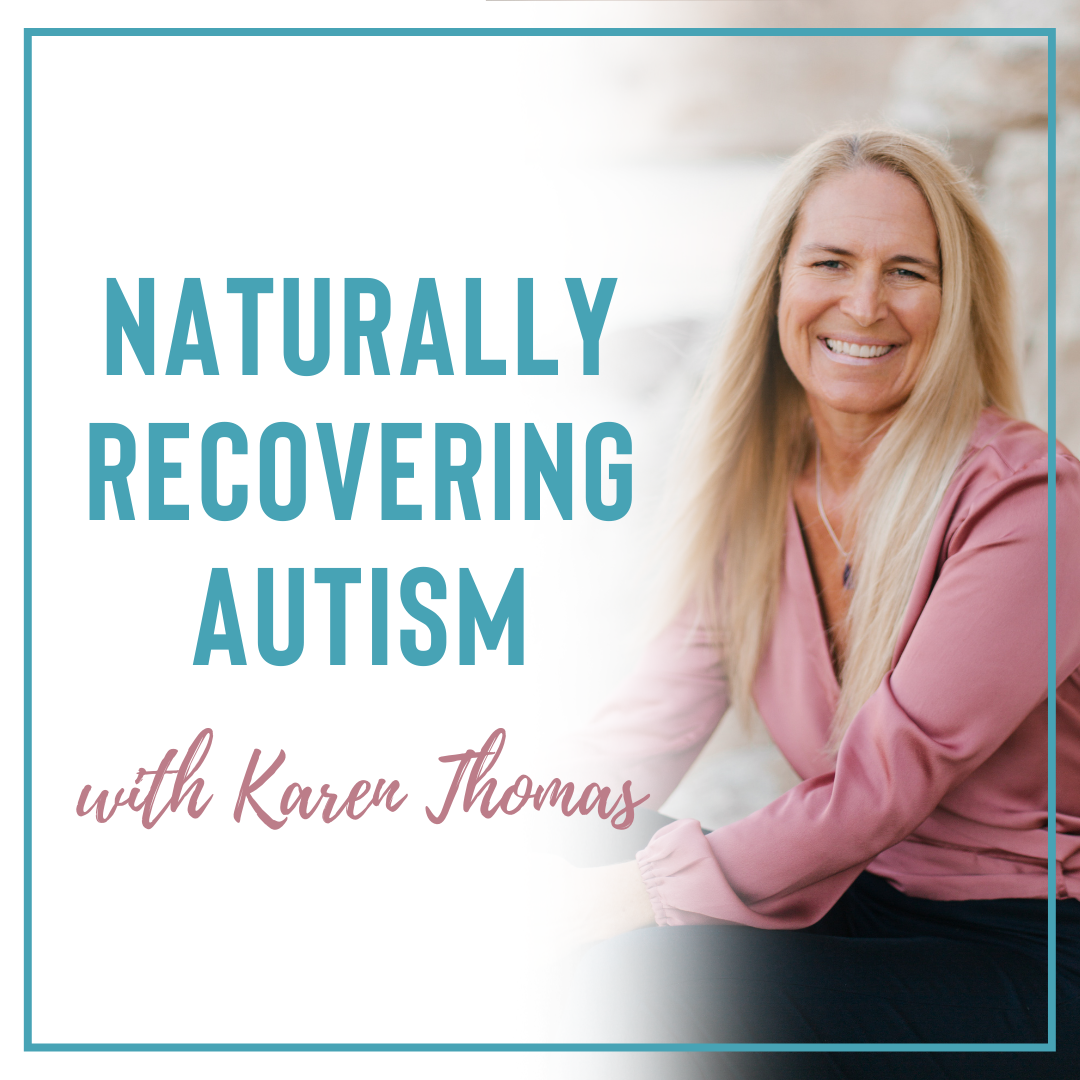

176.9K
Downloads
242
Episodes
Inspiring parents with natural solutions to create the most fulfilling, healthy and productive life possible for their children with autism. Empowering Parents with the Resources to Naturally Recover Autism from a mom who has done it. Having once been told her son could not recover from his symptoms of autism Karen Thomas now shares what she has learned through over a decade of personal research and experience that has brought her own son to recovery. Her background as a Craniosacral Therapist allowed her the awareness that the brain could heal if given the right support. Learn how you can allow your child a clear path for a happier and more fulfilling life with improved communication, better sleep, improved social abilities, and overall improved health. Get your FREE GUIDE to the top 7 foods to eliminate from your child's diet for better sleep, calmer moods, improved focus and speech at, NaturallyRecoveringAutism.com /7foods For more resources go to, NaturallyRecoveringAutism.com
Episodes
![Understanding Pica in Children with Autism: Causes, Connections, and What to Watch For [Podcast Episode #219]](https://pbcdn1.podbean.com/imglogo/ep-logo/pbblog1796738/Episode_Naturally_Recovering_Autismahvu2_300x300.jpg)
Wednesday Apr 30, 2025
Wednesday Apr 30, 2025
Pica in children with autism, touching on its link to PANS, nutritional deficiencies, emotional factors, and gut health.
Pica is a complex and often misunderstood condition that can be particularly concerning when observed in children with autism. It involves the persistent eating of non-food items such as dirt, paper, chalk, hair, or even small objects like coins or toys. While pica can occur in children of all backgrounds, it is significantly more common in individuals with autism spectrum disorder (ASD). Understanding the why behind this behavior is crucial for parents, caregivers, and professionals who want to provide appropriate support.
What Is Pica?
Pica is defined by the DSM-5 as the repeated ingestion of non-nutritive substances over a period of at least one month, and at an age where this behavior is developmentally inappropriate. In children with autism, pica can often persist beyond toddler years and may require clinical attention due to the risks involved, including choking, intestinal blockages, poisoning, and exposure to harmful bacteria.
Why Is Pica More Common in Children with Autism?
There are multiple factors that can contribute to pica behaviors in children with autism, including sensory processing differences, emotional regulation difficulties, nutritional deficiencies, and underlying medical conditions. Here are some key contributors:
1.
Nutritional and Mineral Deficiencies
One of the most common underlying causes of pica is a deficiency in essential nutrients and minerals. When the body lacks certain elements, it may instinctively seek out non-food items that contain trace amounts of what it’s missing. In children with autism, this is especially relevant due to dietary restrictions, picky eating, or poor absorption caused by gut health issues.
Common deficiencies linked to pica include:
- Iron – Low iron levels (anemia) have a strong correlation with pica. Increasing heem foods which are rich in iron are suggested. Thai is much better than supplementing with iron since iron supplements can aggravate virus activity. Food-based supplements are a much safer way to increase iron naturally.
- Zinc – Important for taste, smell, and immune function.
- Magnesium – Needed for neurological and muscular function.
- Calcium – Can influence cravings for chalk or dirt.
- Vitamin D and B12 – Deficiencies can affect mood, energy, and neurological health.
Children with autism may be more susceptible to these deficiencies due to selective eating, inflammation, or gut dysbiosis.
2.
Emotional and Sensory Reasons
Pica can also be a self-soothing or sensory-seeking behavior. Children with autism may have heightened or lowered sensory sensitivities and may find certain textures, smells, or even the act of chewing or swallowing non-food items calming or stimulating.
Other emotional and psychological factors that may drive pica include:
- Stress or anxiety – Non-food chewing may become a coping mechanism.
- Communication challenges – Inability to express discomfort or emotional needs might manifest as pica.
- Obsessive-compulsive tendencies – Some children may develop ritualistic eating of non-foods.
Providing alternative sensory activities and emotional regulation tools can help reduce the compulsion.
3.
Pica as a Symptom of PANS (Pediatric Acute-onset Neuropsychiatric Syndrome)
PANS is a neuroimmune condition characterized by the sudden onset of obsessive-compulsive symptoms, eating restrictions, tics, or emotional disturbances following infection or inflammation. Interestingly, pica has been observed in children experiencing flare-ups of PANS, particularly when inflammation in the brain affects areas related to impulse control and appetite.
In these cases, pica may appear suddenly and be accompanied by other neuropsychiatric symptoms. If this is suspected, seeking a qualified PANS/PANDAS specialist is critical, as treatment often involves addressing underlying infections and modulating the immune response...
Click Here or Click the link below for more details!
No comments yet. Be the first to say something!